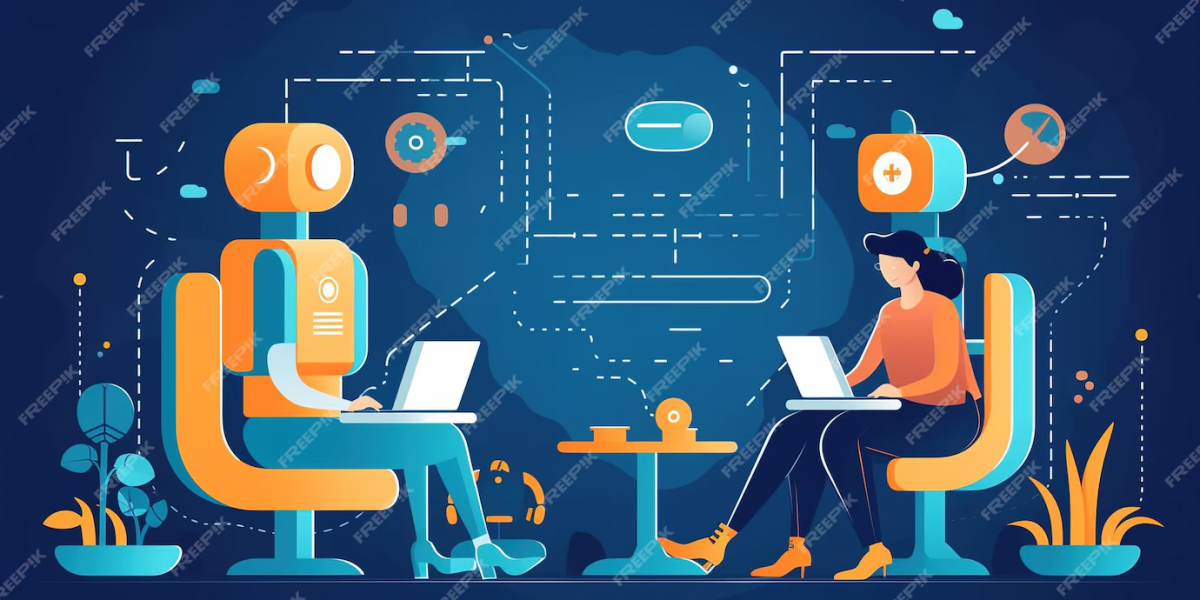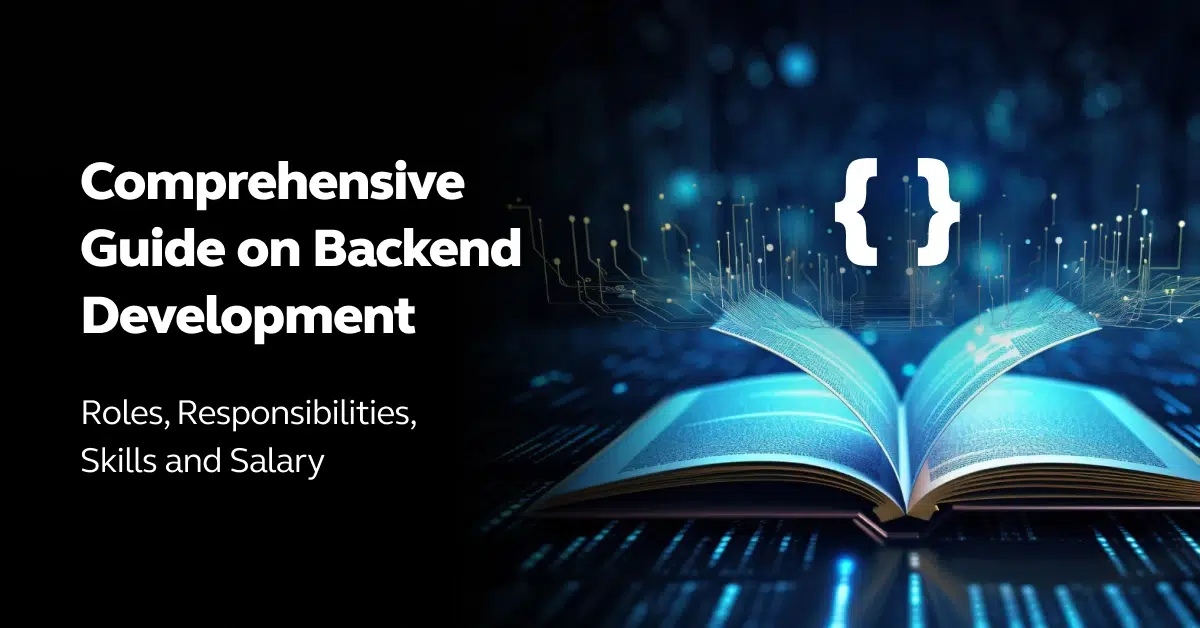
Exploring the Influence of AI and Machine Learning in Full Stack Development [2024]
May 23, 2024 6 Min Read 1585 Views
(Last Updated)
In the rapidly evolving world of technology, Artificial Intelligence (AI) is a game-changer for full stack development, automating tasks from debugging to writing new lines of code.
Leveraging AI, specifically in full stack machine learning, transforms development processes by interpreting programming languages and predicting developer needs for cleaner, faster code production with remarkable accuracy.
The inclusion of AI-driven machine learning models in full stack development, utilizing computer vision and Natural Language Processing (NLP), enables the creation of more intelligent and responsive user interfaces, including AI-powered chatbots and virtual assistants.
This innovation not only streamlines the development process across multiple platforms but also significantly enhances UI/UX design, testing, and deployment, promising a seamless user experience.
With AI’s pivotal role in revolutionizing the full stack landscape, it’s clear that embracing these technologies is crucial for developers looking to stay ahead in the competitive field of software development.
Table of contents
- Enhancing Development Efficiency through AI Automation
- Key Roles AI and Machine Learning play in Full Stack Development:
- 1) Automating Routine Development Tasks
- 2) Enhancing User Experience Through Intelligent Interfaces
- 3) Enhancing UI/UX Design through Machine Learning
- 4) AI-Driven Testing and Debugging Tools
- 5) Predictive Analytics and Intelligent Decision Making
- 6) Data Management and Analysis with AI
- 7) AI-Powered Tools and Technologies Revolutionizing Full Stack Development
- Challenges and Future Directions in AI-Enhanced Full Stack Development
- Emerging Technologies and Ethical Considerations
- Takeaways...
- FAQs
- What is the role of AI in learning and development?
- What is the role of AI in programming?
- What is the role of AI in big data?
- What is machine learning in AI?
Enhancing Development Efficiency through AI Automation
- AI-powered tools are fundamentally transforming the landscape of full stack development by automating a variety of tasks that traditionally required manual intervention.
- One of the standout innovations in this area is the use of AI-powered coding platforms such as Kite, DeepCode, and Codota.
- Through tools like Kite, Codota, and DeepCode, developers can harness deep learning and neural networks for real-time error detection and AI-guided code suggestions, elevating the efficiency and reliability of both front-end and back-end development.
- These platforms enhance development efficiency by offering AI-guided code suggestions and real-time error detection. This not only speeds up the coding process but also ensures a higher quality of code with fewer bugs.
- Furthermore, AI excels in automating routine tasks such as code generation, bug detection, and the writing of boilerplate code.
- This comprehensive automation across various stages of development not only streamlines processes but also enhances the overall efficiency and reliability of full stack projects.
Know About 7 Benefits of AI-Powered Learning Environments
Key Roles AI and Machine Learning play in Full Stack Development:
Let us now discuss at length and learn about how exactly these revolutionary technologies are influencing the full stack development process.
1) Automating Routine Development Tasks
- a) AI tools significantly enhance full stack development by automating mundane tasks, which increases efficiency and allows developers to focus on more complex and creative aspects of their projects.
- For instance, AI-powered coding assistants like GitHub Copilot and Amazon Codewhisperer suggest code snippets and complete functions across multiple programming languages, streamlining the coding process.
- These tools use machine learning to understand the context of the code being written, providing relevant suggestions that reduce coding time and improve accuracy.
- b) Moreover, AI-driven testing platforms like Testim and Applitools automate the testing of web and mobile applications.

- These platforms utilize visual AI to conduct automated visual testing, which includes cross-browser and cross-device compatibility checks, ensuring that applications perform consistently across all user interfaces.
- By automating these testing processes, developers can identify and resolve issues much earlier in the development cycle, which significantly reduces the time and resources spent on manual testing.
- c) In addition to coding and testing, AI technologies also optimize database management and content creation.
- Predictive analytics enable AI tools to forecast future use patterns and optimize database queries, which enhances web application performance.
- Similarly, AI can generate text, images, or videos for content-heavy applications, allowing developers to automate parts of the content creation process.
- This not only speeds up the development of applications but also ensures that the content is optimized for the target audience, improving user engagement and satisfaction.
Would you like to master Full Stack Development and build an impressive portfolio? Then GUVI’s Full Stack Development Bootcamp is the perfect choice for you, taught by industry experts, this boot camp equips you with everything you need to know along with extensive placement assistance!
2) Enhancing User Experience Through Intelligent Interfaces
- a) AI-powered chatbots and virtual assistants are revolutionizing the way users interact with applications. By integrating natural language processing and machine learning, these tools can provide personalized assistance, handle routine inquiries, and even analyze customer data in real time. This capability allows for responses that are not only immediate but also highly tailored to each user’s specific needs and preferences.

- b) Virtual Reality (VR) and Augmented Reality (AR) are taking user experience to new heights in full stack development. These technologies offer immersive and interactive experiences, making applications more engaging. For instance, an e-commerce app can use AR to let customers visualize products in their own space before making a purchase, significantly enhancing user satisfaction and engagement.
- c) AI’s role in UI/UX design is becoming increasingly critical as it offers predictive analytics and real-time feedback, allowing designers to create more effective and adaptive interfaces. Machine learning algorithms analyze vast amounts of user behavior data to provide insights that help in crafting personalized design elements. This not only improves the aesthetic appeal but also ensures that the interfaces are user-friendly and meet the specific needs of different demographics.
3) Enhancing UI/UX Design through Machine Learning
Machine learning significantly transforms UI/UX design by providing highly personalized and seamless user experiences.
These technologies analyze vast amounts of user data to make intelligent predictions, tailoring content and suggestions to individual preferences and behaviors.
This not only enhances the user experience by anticipating needs but also streamlines content generation, increasing overall efficiency.
Also Read: Voice User Interface (VUI) Design: Crafting Conversational Experiences
a) Personalized Recommendation Systems
- User Behavior Analysis: Machine learning algorithms evaluate user interactions and behaviors to identify patterns and preferences.
- Tailored Content: Based on these insights, systems generate personalized recommendations, ensuring that users receive content that is most relevant to their interests.
- Continuous Learning: As more data is collected, the system adapts and improves its recommendations, enhancing user satisfaction over time.
b) Automated Content Generation
- Chatbots and Virtual Assistants: These tools use machine learning to deliver automated, context-aware responses to user inquiries, making interactions smoother and more intuitive.
- Dynamic Content Adaptation: Machine learning enables the automatic generation of text, images, and videos tailored to user preferences, significantly reducing the workload on content creators.
Machine learning’s capability to process and analyze large data sets in real-time allows for the identification of subtle user behavior patterns that might go unnoticed by traditional analytical methods. This leads to more accurate user predictions and a more customized user experience.
Additionally, AI-powered tools assist in various design tasks such as image resizing, background removal, color correction, and even HTML/CSS generation, further simplifying the design process and enabling designers to focus on creativity and innovation.
4) AI-Driven Testing and Debugging Tools
AI-driven testing and debugging tools are becoming indispensable in the realm of full stack development, particularly as software systems grow in complexity and the pace of development accelerates.

These AI-powered tools not only streamline the testing process but also enhance the accuracy and efficiency of debugging, crucial for maintaining high-quality software.
a) Revolutionizing Debugging with AI
- AI-powered debugging tools like Kite, DeepCode, and Codota revolutionize how developers tackle software bugs.
- By automating the debugging process, these tools can swiftly identify hard-to-find bugs and enhance code comprehension.
- This automation allows developers to focus on more complex problems, thereby optimizing development time and reducing the likelihood of errors persisting into production.
b) Enhancing Testing Efficiency
- AI-driven testing solutions such as Testim and Applitools automate critical testing processes, swiftly uncovering issues that might elude manual testing.
- These tools utilize advanced algorithms to simulate user interactions and assess visual elements across different platforms, ensuring that the software performs consistently in various environments.
- The integration of AI not only speeds up the testing cycle but also significantly boosts the overall quality of the software.
c) Financial and Strategic Benefits for Businesses
- Adopting AI-driven testing and debugging tools offers substantial financial benefits by reducing the time and resources spent on identifying and fixing bugs.
- Tools like Diffblue Cover and Functionize use sophisticated AI techniques to automatically generate tests and optimize testing procedures, which in turn helps businesses accelerate product development, increase market share, and enhance customer satisfaction through improved software performance and reliability.
5) Predictive Analytics and Intelligent Decision Making
- Predictive analytics in full stack development leverages historical data to forecast future trends and behaviors, significantly enhancing decision-making processes.
- By integrating AI-powered predictive models, developers can utilize both historical data and real-time inputs to gain insights into market movements, client preferences, and potential opportunities.
- This capability enables businesses to not only anticipate future needs but also tailor their strategies to meet those demands effectively.
- AI-driven real-time data processing tools are crucial for businesses that need to adapt quickly to changing market conditions.
- These tools provide decision-makers with up-to-the-minute data, allowing them to make informed decisions swiftly.
6) Data Management and Analysis with AI
- In the realm of full stack development, AI is revolutionizing how data is managed and analyzed, enabling developers to handle large datasets with unprecedented efficiency.
- The integration of AI, particularly through tools like NLP and advanced data management frameworks, facilitates a more streamlined ETL (Extract, Transform, Load) pipeline approach.
- Initially, during the Extract phase, NLP techniques interpret project requirements directly from natural language inputs such as emails or project briefs.
- This allows for a seamless transition into the Transform phase, where AI-driven tools, including code generators and scaffolding technologies, convert these requirements into structured code components.

Transforming Data into Actionable Insights
- Code Generation: AI applications synthesize raw data inputs into workable code, significantly reducing manual coding efforts.
- Super Scaffolding: Tools like Bullet Train’s Super Scaffolding organize and structure the generated code, enhancing the development workflow.
- Task Management: In the Load phase, platforms such as gusty oversee the execution of tasks like database migrations and API integrations, ensuring that all components work harmoniously.
- AI’s capability extends beyond mere data handling to sophisticated data analysis and storage solutions. AI-driven systems like Object Storage and Databases not only provide scalable and persistent storage options but also ensure fast data retrieval, crucial for dynamic full stack applications.
- Additionally, the use of Data Flywheel and Semi-Supervised Learning techniques enriches the diversity of training models, enhancing the AI’s learning capabilities without the need for extensive new data collection.
- This is complemented by advanced data processing techniques such as MapReduce and DAG, which efficiently manage and streamline data pipelines, crucial for maintaining the integrity and speed of data flow in complex projects.
Explore: 5 Tips For Secure Coding Practices in Full Stack Development
7) AI-Powered Tools and Technologies Revolutionizing Full Stack Development
AI-powered tools like GitHub Copilot, ChatGPT, Indigo.Design, Mintlify, Uizard, Google Gemini, Tabnine, Khroma, Wix ADI, and Snyk are significantly transforming the landscape of full stack development.
These tools enhance various aspects of the development process, from initial design to final deployment, ensuring that applications are both efficient and secure.
For instance, GitHub Copilot and Tabnine use machine learning to provide coding assistance, speeding up the development process and reducing errors.
Also Read About The 5C’s of Effective Content Marketing: A Deep Dive
a) Streamlining Security and Content Generation
- AI-powered security solutions play a crucial role in protecting sensitive data and fortifying application security.
- Tools like Snyk specialize in identifying and mitigating vulnerabilities in code, which is essential for maintaining the integrity and security of applications.
- Additionally, AI-driven content generation tools are redefining how dynamic and personalized content is created for web applications.
- These tools, capable of producing tailored content, enhance user engagement by providing a more customized experience.
b) Enhancing Cross-Platform Development
- The development of applications that operate seamlessly across multiple platforms is streamlined by AI-driven tools such as Flutter and React Native.
- These technologies simplify the process of creating robust applications that provide a consistent user experience on any device.
- By automating elements of the design and development process, these tools allow full stack developers to focus on more strategic tasks, thereby optimizing workflow and efficiency.
- Incorporating AI into full stack development not only accelerates the development process but also brings substantial cost savings, and flexibility, and improves communication among team members.
- Full stack developers, with their comprehensive understanding of the workflow, play a pivotal role in integrating these AI technologies effectively, ensuring that the potential of AI is fully realized in web applications.
Challenges and Future Directions in AI-Enhanced Full Stack Development
AI and machine learning are reshaping full stack development, yet this integration is not without challenges. Data privacy remains a significant concern as reliance on extensive training data could lead to potential breaches.
Moreover, the initial cost of implementing AI can be high, deterring smaller enterprises from adopting this technology. Additionally, while AI excels in data-driven tasks, its ability to replicate the nuanced creativity of human developers is still limited.
Emerging Technologies and Ethical Considerations
- Adoption of NLP and Deep Learning: The future of AI in full stack development sees the integration of Natural Language Processing for enhanced coding efficiency and deep learning for more sophisticated debugging.
- AI-Boosted Cybersecurity: As cyber threats evolve, AI-powered security solutions like anomaly detection and threat intelligence are crucial for robust web application protection.
- Ethical AI Design: Addressing AI bias and ensuring transparency in AI processes are pivotal. Implementing bias mitigation strategies and enhancing transparency can foster more ethical AI applications.
The landscape of full stack development is poised for significant evolution. Developers must embrace continual learning and adaptability, integrating AI tools and ethical considerations into their workflows to stay relevant and innovative in an AI-dominated future.
Takeaways…
The automation of routine tasks, coupled with AI’s ability to predict and solve complex problems, not only streamlines the development process but also raises the benchmark for software quality, efficiency, and user experience.
The advances in AI-driven tools like GitHub Copilot, ChatGPT, and automated testing platforms have demonstrated the potential to significantly reduce development time, enhance code quality, and fortify application security, exemplifying the transformative role of AI in pushing the boundaries of what can be achieved in full stack development.
The emphasis on not just harnessing the power of AI but doing so responsibly highlights the need for a continued focus on ethical AI practices, transparency, and the nurturing of AI systems that complement and augment human creativity and decision-making.
Must Explore: 5 Tips to Easily Improve Your Coding Skills with ChatGPT
FAQs
What is the role of AI in learning and development?
The role of AI in learning and development is to personalize learning experiences, offer adaptive feedback, and streamline administrative tasks for educators.
What is the role of AI in programming?
AI in programming aids in automating repetitive tasks, debugging code, and assisting developers in writing efficient algorithms.
What is the role of AI in big data?
AI plays a crucial role in big data by analyzing vast amounts of information quickly, identifying patterns, and providing valuable insights for decision-making.
What is machine learning in AI?
Machine learning in AI involves algorithms that enable systems to learn from data, improve performance over time, and make predictions or decisions without explicit programming.
































Did you enjoy this article?